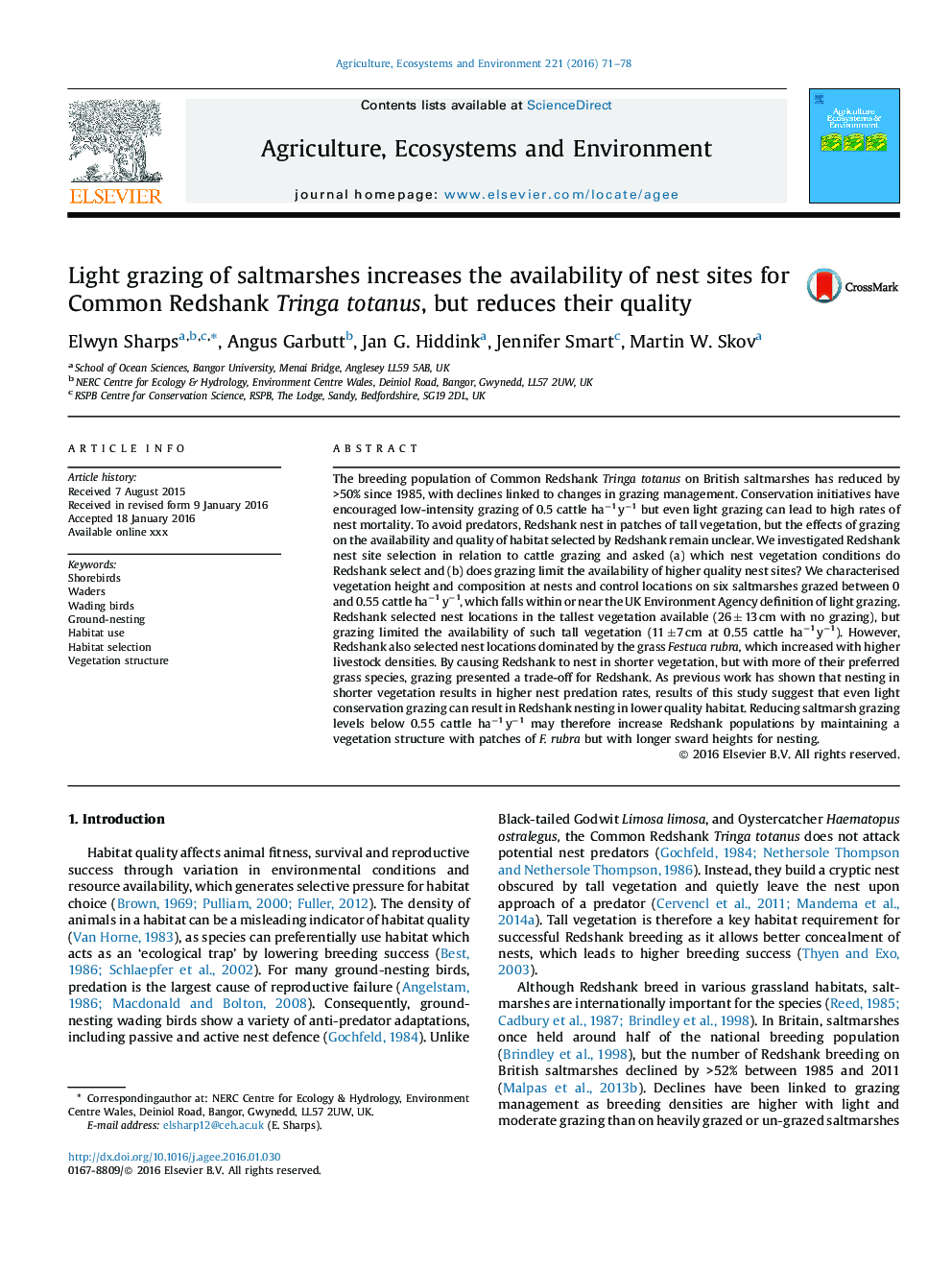| کد مقاله | کد نشریه | سال انتشار | مقاله انگلیسی | نسخه تمام متن |
|---|---|---|---|---|
| 8487437 | 1552031 | 2016 | 8 صفحه PDF | دانلود رایگان |
عنوان انگلیسی مقاله ISI
Light grazing of saltmarshes increases the availability of nest sites for Common Redshank Tringa totanus, but reduces their quality
دانلود مقاله + سفارش ترجمه
دانلود مقاله ISI انگلیسی
رایگان برای ایرانیان
کلمات کلیدی
موضوعات مرتبط
علوم زیستی و بیوفناوری
علوم کشاورزی و بیولوژیک
علوم زراعت و اصلاح نباتات
پیش نمایش صفحه اول مقاله

چکیده انگلیسی
The breeding population of Common Redshank Tringa totanus on British saltmarshes has reduced by >50% since 1985, with declines linked to changes in grazing management. Conservation initiatives have encouraged low-intensity grazing of 0.5 cattle haâ1 yâ1 but even light grazing can lead to high rates of nest mortality. To avoid predators, Redshank nest in patches of tall vegetation, but the effects of grazing on the availability and quality of habitat selected by Redshank remain unclear. We investigated Redshank nest site selection in relation to cattle grazing and asked (a) which nest vegetation conditions do Redshank select and (b) does grazing limit the availability of higher quality nest sites? We characterised vegetation height and composition at nests and control locations on six saltmarshes grazed between 0 and 0.55 cattle haâ1 yâ1, which falls within or near the UK Environment Agency definition of light grazing. Redshank selected nest locations in the tallest vegetation available (26 ± 13 cm with no grazing), but grazing limited the availability of such tall vegetation (11 ± 7 cm at 0.55 cattle haâ1 yâ1). However, Redshank also selected nest locations dominated by the grass Festuca rubra, which increased with higher livestock densities. By causing Redshank to nest in shorter vegetation, but with more of their preferred grass species, grazing presented a trade-off for Redshank. As previous work has shown that nesting in shorter vegetation results in higher nest predation rates, results of this study suggest that even light conservation grazing can result in Redshank nesting in lower quality habitat. Reducing saltmarsh grazing levels below 0.55 cattle haâ1 yâ1 may therefore increase Redshank populations by maintaining a vegetation structure with patches of F. rubra but with longer sward heights for nesting.
ناشر
Database: Elsevier - ScienceDirect (ساینس دایرکت)
Journal: Agriculture, Ecosystems & Environment - Volume 221, 1 April 2016, Pages 71-78
Journal: Agriculture, Ecosystems & Environment - Volume 221, 1 April 2016, Pages 71-78
نویسندگان
Elwyn Sharps, Angus Garbutt, Jan G. Hiddink, Jennifer Smart, Martin W. Skov,